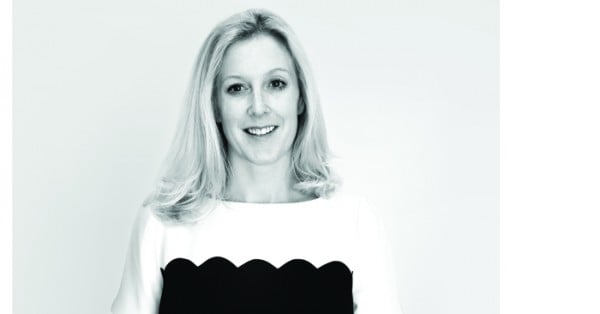
We’ve heard much digital talk in the past, but 2017 will be when it truly starts to happen, says Ema Linaker
I’ve been focused on the power of digital media for more than 12 years, and its promise is clearly continuing to grow. Here in the Middle East, we’re now seeing digital transformation really evolve from a trend to a central component of business strategy. Any business that does not place digital firmly at the centre of its growth strategy runs the risk of becoming increasingly irrelevant in the eyes of its customers and the market at large.
So, what do I see as key trends here in the region for 2017?
1. Real experiences, real time
According to e-Marketer’s 2016 Social Media Penetration Report, 40 per cent of the time spent by smartphone users in MENA is social time – mainly on Instagram and Snapchat. Brand managers wanting to showcase real-time content in their communications need to plan well in advance. Be confident of your brand’s personality and value proposition, then match those characteristics to the best-fit communication channels and content styles. It’s the spur-of-the-moment social connection that’s important – making people and connections real will help your brand stand out.
2. Beyond reality
If anyone still doubted the power of augmented reality (AR) and virtual reality (VR) to connect with consumers, the success of the Pokemon Go app has laid those doubts firmly to rest. Once the sole province of the hardcore gamer, these technologies are now front and centre for mainstream consumers, providing new ways to connect and deliver unique, memorable interactions.
Marry these new opportunities with the growing popularity of workplace gamification, and I expect to see gamification go from footnote to core business strategy.
3. Home-grown digital superstars
Ease of connectivity plus social relationships equals accessible influencers, and that’s a model that’s gaining importance in MENA. According to BPG Cohn & Wolfe, more than 70 per cent of UAE residents aged 18-40 will poll their circle of influencers before making a purchase, and up to 50 per cent of all purchasing decisions involve word-of-mouth recommendations. So identifying and targeting those influencers with the right messages/offerings presents a powerful marketing opportunity.
4. Beating the ad blockers
Mobile ad-blocking browser add-ins are increasing their market penetration as fast as digital advertisers are filling small-screen real-estate. It’s time to get creative and build the kind of campaigns that act like part of the social conversation, not like a hard sales pitch – another reason that targeting peer influencers is so important.
5. Wearing the web
Smart watches and fitness wearables are just the beginning. Research firm Frost & Sullivan is expecting shipments of wearables to double over the next few years in MENA. And with growing ubiquity comes growing marketing opportunities. Companies can start to pick experience-based channels to deliver their messages. Have a new line of running shoes? Push the benefits through Bluetooth headphones designed for runners and invite direct feedback via an app embedded in the runner’s media player.
6. Real-time messaging, all the time
Thanks to the near-universal presence of smartphones, texting and instant messaging have merged into a seamless, all-encompassing communication environment. By 2020, e-Marketer expects there to be more than 173 million mobile messaging app users in MENA and a staggering 2 billion around the world. Businesses that are not embedded in those conversations will to all intents and purposes not exist.
7. Video, video, everywhere
The mobile communication platform is video. Real-time video can take all participants right inside the sharing experience. And it’s clearly an experience that resonates in MENA. More than 310 million YouTube video views happen daily, making the region second only to the US in mobile video usage.
8. Seamless content delivery
Multiple device ownership – computers, tablets, smartphones, smart TVs, and the every-growing internet of things – is ratcheting up users’ expectations of content. According to Google, 78 per cent of people believe owning multiple devices has improved their lives, but that belief is tempered by an expectation that the content delivered to those devices will be optimised for quality of appearance on each device.
9. Social conscience meets brand marketing
Simon Mainwaring noted in a recent Forbes article that 71 per cent of consumers would help a brand promote its products and services if
a socially beneficial cause
or purpose was attached to that brand. I call this Marketing 3.0, or ‘Know Your Why’, and one might even say it’s a first step into a post-consumer-driven marketplace, where brand values become more important than brand products.
10. E-commerce becomes me-commerce
Here’s where those personal circles of influence come back into play. The e-commerce sector in MENA has soared well past the $10 billion mark, and much recent growth has come from the influence of social networks – particularly when it comes to fashion. You just have to look at the impact of locally produced shows like Harper’s House of Bazaar and Fashion Forward at d3 to see the power of ‘people like me’ driving the engagement and, ultimately, sales of brands both locally and internationally.
So what does all this mean?
In many ways, it’s a stark reminder that the customer is still king – or queen – and much more powerful than ever before. Ensuring the optimum customer experience at any and every touch point must be the goal of every digital marketer in 2017. It’s no longer a one-time experience. Anywhere and everywhere a customer can interact with a brand, that experience must be consistent, it must be appropriate, and it must be positive.
Ema Linaker is director of digital at Edelman Middle East









